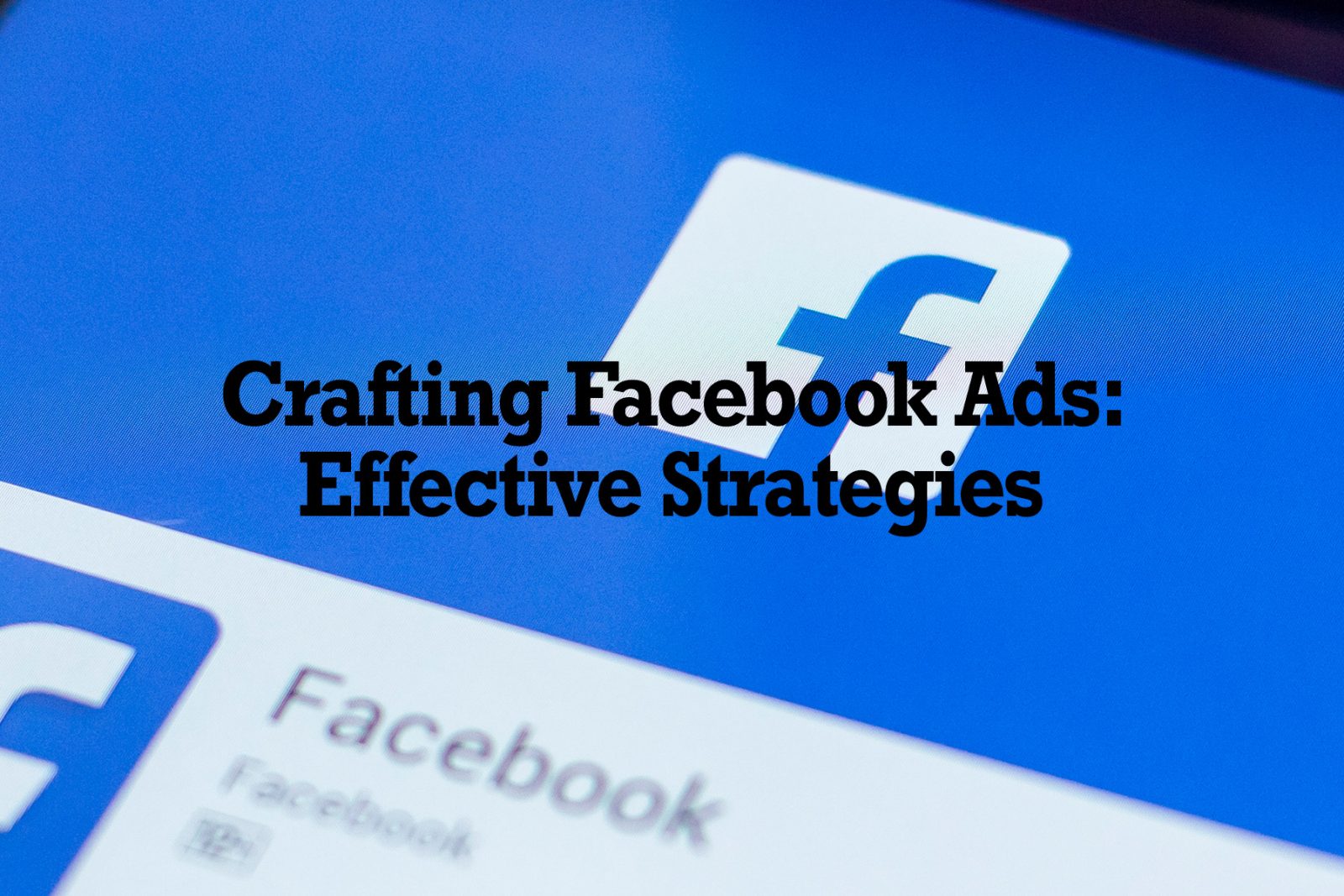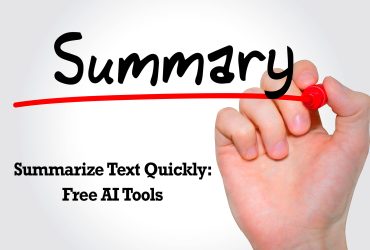Crafting captivating Facebook ads is crucial for businesses looking to engage their audience and drive conversions. An effective Facebook ad not only grabs attention but also communicates the value of a product or service concisely and persuasively. Several strategies can be employed to achieve this, ranging from compelling copywriting to targeting the right demographics. Understanding the psychology behind user engagement and the nuances of the platform’s advertising tools is critical to creating ads that resonate with viewers and encourage them to take action. This article will explore the most effective strategies for writing Facebook ads that stand out in a crowded social media landscape.
Understanding the Basics of Facebook Ads
To harness the power of Facebook advertising, it’s essential to understand the different ad formats at your disposal. Image ads offer a clean, simple layout that’s great for driving traffic, while video ads can tell a more compelling story. Carousel ads allow you to showcase multiple products or tell a step-by-step story. Each type serves a unique purpose and can be used to achieve different campaign goals.
Ad targeting, placement, and creative creativity are the trifecta of successful Facebook advertising. Targeting ensures your ads reach the right people, placement dictates where your ads will be seen, and innovative content captures the audience’s attention. All three elements must work in harmony to maximize the impact of your ad campaigns.
Tracking key metrics is crucial to understanding the effectiveness of your Facebook ads. Metrics such as click-through rate (CTR), conversion rate, and return on ad spend (ROAS) provide valuable insights into your campaign’s performance. Monitoring these metrics helps you make data-driven decisions to refine your advertising strategy.
Setting Goals for Your Facebook Ad Campaign
Setting clear objectives for your Facebook ad campaign is the first step to success. Whether aiming to increase brand awareness, generate leads, or drive sales, having a defined goal helps you create more focused and compelling ads. Goals should be tailored to your business needs and aligned with your overall marketing strategy.
The SMART framework is a powerful tool for setting and achieving your Facebook ad goals. Specific, Measurable, Achievable, Relevant, and Time-bound objectives provide a clear roadmap for your campaign and help measure success. For instance, aiming to increase website traffic by 20% within the next quarter is a SMART goal that guides your ad strategy.
Effective goal-setting strategies involve understanding your business’s unique position and the specific outcomes you want to achieve. This might include conducting a SWOT analysis to identify opportunities and setting benchmarks based on past ad performance. Clear goals act as a compass, guiding your ad spend and creative decisions.
Understanding Your Target Audience
Knowing who you’re trying to reach with your Facebook ads is critical. Understanding your audience’s demographics, interests, and behaviors allows you to craft messages that resonate and convert. Detailed audience insights help tailor your messaging and ensure your ads are served to those most likely to engage.
Conducting audience research and creating buyer personas are invaluable for effective ad targeting. Surveys, interviews, and customer data analysis can reveal preferences and pain points. These insights help you create personas representing segments of your audience, making your ads more relevant and impactful.
Segmentation and customization are vital in enhancing Facebook ad performance. By dividing your audience into groups based on specific criteria, you can create tailored ads that speak directly to their interests. Personalized ads are more likely to engage users, leading to higher conversion rates and a better return on investment.
Creating Compelling Ad Copy and Visuals
Writing ad headlines and descriptions that capture attention is an art. Your ad copy should be concise, clear, and include a strong call-to-action (CTA). And clear. It should highlight the benefits of your product or service and address the audience’s needs or pain points. A compelling headline can distinguish between a user scrolling past or stopping to engage with your ad.
Visuals are just as important as the words in your ad. High-quality images or videos that align with your brand and appeal to your target audience can significantly improve engagement. Use visuals that stand out in the crowded Facebook feed, evoke emotion, and complement your ad copy.
A/B testing is a must when optimizing your Facebook ads. By testing different combinations of ad copy and visuals, you can determine what resonates best with your audience. This data-driven approach allows you to refine your ads for better performance continually. Testing should be an ongoing process as audience preferences and platform algorithms evolve.
Leveraging Facebook Ad Formats and Features
Facebook offers a variety of ad formats to cater to different marketing objectives and audience preferences. Lead ads simplify lead generation by allowing users to submit their information without leaving the platform. Messenger ads enable direct communication with potential customers, fostering a more personal connection. Dynamic ads automatically promote products to users based on their interests and past interactions with your website or app. Understanding each format’s unique advantages allows you to choose the most effective one for your campaign goals.
To enhance the effectiveness of your Facebook ads, take advantage of advanced targeting features. Custom audiences allow you to reach users based on your existing contacts, while lookalike audiences enable you to find new users similar to your best customers. Retargeting options remind users of products they’ve viewed but haven’t purchased, increasing the likelihood of conversion. Utilizing these features helps create a more personalized ad experience, improving engagement and conversion rates.
Interactive elements such as polls or quizzes can significantly boost engagement with your Facebook ads. For example, a beauty brand might use a poll to let users vote on their favorite lipstick shade, or a fitness company could offer a quiz to recommend personalized workout plans. These creative strategies engage users and provide valuable insights into their preferences, helping you refine your targeting and product offerings.
Optimizing Ad Delivery and Budgeting Strategies
Strategic ad scheduling ensures your ads are shown when your audience is most active, improving visibility and engagement. Ad delivery optimization helps your ads reach users more likely to take the desired action, whether clicking, liking, or purchasing. Proper budget allocation across different campaigns and ad sets maximizes your ad spend effectiveness. Balancing these elements is critical to achieving optimal ad performance.
To optimize your Facebook ad performance, consider your bid strategy carefully. Whether you choose the lowest or target cost bidding, align it with your campaign objectives. Select ad placements across Facebook’s various platforms, such as Instagram or Audience Network, to extend your reach. Set clear optimization goals, whether for conversions, link clicks, or engagement, to guide the delivery of your ads and ensure they perform as intended.
Regular monitoring of ad performance metrics is crucial for understanding the effectiveness of your campaigns. Analyze critical indicators such as click-through rates, conversion rates, and cost per action to identify areas for improvement. Make data-driven decisions to adjust your targeting, creative elements, and budget distribution, maximizing your return on investment.
Implementing Conversion Tracking and Attribution Models
Conversion tracking is essential for measuring the success of your Facebook ads. By tracking users’ actions after clicking on your ad, such as making a purchase or signing up for a newsletter, you can determine the direct impact of your advertising efforts. Attribution models help you understand which touchpoints contribute to conversions, allowing you to allocate your ad spend more effectively and improve overall campaign performance.
Different attribution models provide varying perspectives on the customer journey. The first-click model credits the first interaction for the conversion, while the last-click model attributes the final touchpoint. Multi-touch models consider multiple interactions throughout the customer journey. Choosing the suitable attribution model depends on your specific marketing goals and can significantly influence how you perceive and optimize ad performance.
To maximize ad attribution data, analyze the paths users take before converting. Identify which ads and touchpoints are most effective at driving conversions and allocate more budget to those areas. Test different ad creatives and messages to see which resonates best with your audience, and continuously refine your campaigns based on the insights gathered from your attribution data.
Creating Engaging Ad Experiences for Users
Creating a cohesive ad experience that reflects your brand’s messaging and values is crucial for building trust with your audience. Your ads should seamlessly integrate with the user’s social media experience, providing value and relevance. Consistent branding, tone, and messaging across all ads reinforce your brand identity and can lead to higher engagement and brand recall.
Ad storytelling can captivate users and evoke emotions, leading to a deeper connection with your brand. Incorporating user-generated content, such as customer reviews or photos, lends authenticity and encourages trust. Social proof, like testimonials or influencer endorsements, can reinforce credibility and persuade users to act. These elements combined can significantly enhance user engagement with your ads.
Successful Facebook ad campaigns often have a few things in common: memorable, shareable, and resonate with their target audience. For instance, a campaign that shares real customer success stories can inspire and motivate others to try your product. Another might use humor or wit to stand out in the news feed, prompting users to share the ad with friends. Analyzing successful campaigns lets you glean insights into what makes an ad experience engaging.
Leveraging Facebook Pixel for Remarketing Campaigns
Facebook Pixel is a powerful tool for tracking user behavior on your website and understanding how they interact with your content. Installing the Pixel allows you to collect data on page views, form submissions, and other essential actions. This information is invaluable for creating targeted remarketing campaigns that reach users who have already shown interest in your products or services, increasing the likelihood of conversion.
Setting up remarketing campaigns with Facebook Pixel involves segmenting your website visitors based on their behavior. For example, you can target users who added items to their cart but didn’t complete the purchase. By serving these users with tailored ads that remind them of the products they are interested in, you can encourage them to return to your site and complete their transactions.
Personalized ad experiences are essential to successful retargeting campaigns. Use the data collected by Facebook Pixel to create ads relevant to each user’s interests and past interactions with your site. Highlight products they viewed, offer special promotions, or provide compelling reasons to return to your website. Personalizing your ads for retargeted audiences can significantly improve your conversion rates and overall campaign effectiveness.
Engaging with Your Audience Through Facebook Ads
Understanding the importance of interaction with users on Facebook through comments, messages, and ad interactions cannot be overstated. When your audience engages with your ads, it boosts the ad’s visibility and provides valuable feedback. By actively engaging, you create a two-way conversation that can lead to a stronger connection with your audience.
Responding to customer inquiries, feedback, and reviews promptly and thoughtfully is essential in building trust and loyalty. Personalized responses show that your brand values its customers and is attentive to their needs. This approach can transform a casual browser into a loyal customer. Moreover, addressing negative feedback with professionalism can turn a potential crisis into an opportunity to demonstrate your commitment to customer satisfaction.
Social listening and sentiment analysis play a significant role in understanding how your audience perceives your brand and ads. You can gain insights into customer preferences and pain points by monitoring conversations and analyzing the emotions behind the interactions. This knowledge allows you to tailor your Facebook ads to resonate more deeply with your audience and improve overall brand perception.
Analyzing and Optimizing Ad Performance
To ensure that your Facebook ads are performing effectively, it’s crucial to analyze key performance metrics such as click-through rate (CTR), cost per click (CPC), and return on ad spend (ROAS). These metrics clearly show how well your ads are resonating with your target audience and whether they’re driving the desired actions.
Conducting A/B testing is a powerful way to optimize your ads. You can determine what resonates best with your audience by testing different ad elements, such as images, headlines, and call-to-actions. Regularly monitoring ad performance and making adjustments based on data can lead to continuous improvement and better results over time.
Interpreting ad performance data is an art that requires a keen eye for detail and a deep understanding of your business goals. Making data-driven decisions is critical to optimizing your ad campaigns. It involves looking at the numbers and understanding their story about user behavior and preferences, allowing you to refine your strategy for maximum impact.
Staying Ahead of Facebook Ad Trends and Updates
Staying abreast of the latest trends and updates in Facebook advertising is essential to maintaining a competitive edge. New ad formats, targeting options, and policy changes can significantly impact the effectiveness of your campaigns. You can leverage new opportunities to engage your audience by keeping up with these developments.
Staying informed about industry changes requires a proactive approach. Subscribe to marketing newsletters, follow thought leaders on social media, and participate in webinars and forums. This will help you adapt your ad strategies to align with the latest best practices and ensure your campaigns remain fresh and relevant.
Continuous learning and experimentation are crucial in the fast-paced world of Facebook advertising. The platform constantly evolves, and what works today may not work tomorrow. By embracing a mindset of ongoing education and testing, you can discover innovative ways to captivate your audience and achieve your marketing objectives.
Final Thoughts
As the digital marketplace grows increasingly competitive, the ability to write effective Facebook ads has never been more critical. It requires a blend of creativity, market insight, and strategic planning. Staying abreast of the latest trends and continuously testing your ads for performance are essential steps in refining your approach. Remember, the ultimate goal is to connect with your audience personally and provide them with solutions that meet their needs. By implementing the strategies discussed, businesses can increase their chances of crafting Facebook ads that are captivating and convert.





